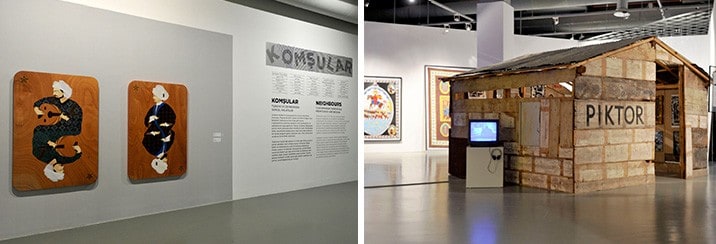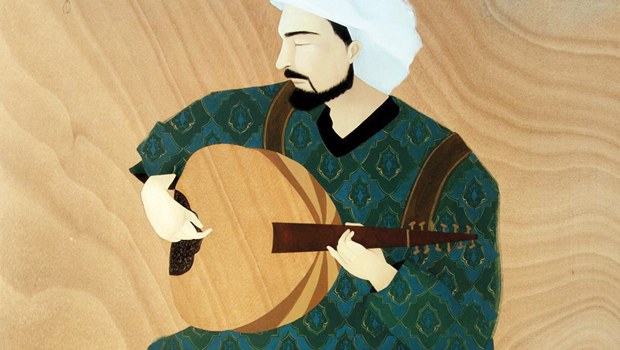
They say a picture’s worth a thousand words. That it can weave a story in your brain in a matter of minutes where words would take hours. But sometimes a thousand words is not enough. The artwork in Komşular, the new exhibition at Istanbul Modern, certainly seems to indicate this. The exhibition explores the rich history of story-telling in Turkey and its surrounds, and comprises moving image, series, archival collection, performance and installation. Very rarely is one picture enough to convey the complex narratives on display here.
Komşular (Neighbours) is on as part of the tenth-year anniversary celebrations for the Istanbul Modern. The exhibition focuses on the social tradition of narratives and journeys in Turkey and its neighbouring countries, and aims to explore social life in the public space and look at how this affects contemporary art. Whether it attains all these statements, I’m not sure, but it does show us that the tradition of story-telling is alive and well in this region. The exhibition includes stories, explorations of story-telling, artworks about stories and stories about artworks.
Photographers and filmmakers have long worked with images to tell stories as we can see from Rena Effendi’s magnificent series of photographs of the people of Xinaliq and Babak Jalali’s acclaimed Frontier Blues, both on display in the exhibition. But it was interesting to see how other contemporary art practice uses the ancient custom of story-telling.

Fahrettin Örenli’s Conspiracy Wall>ANARTIST displays a collection of text, image, sound and moving image on a large wall backed by a map. It’s not a story in the traditional sense – there’s no beginning, middle and end – but it allows the viewer to navigate their way round the elements of the work and create their own narrative of the region.
Noordung 1995–2045, by Dragan Živadinov, Dunja Zupančič and Miha Turšič, is a work in progress, necessitating that we look backwards and forwards as the artists try to forge a new story in art; post-gravitational art. In Adrian Paci’s Piktori we get an insight into his story as an artist and the story of the work on display.
There’s almost too much to see in terms of moving image, so be sure to leave yourself plenty of time if you want to explore all the artists on display. Come Again? a specially curated video programme of performance art, seemed to be a particular highlight. Unfortunately, it’s the one room in the exhibition where there’s nowhere to sit so I only caught about 5 minutes of the 88-minute loop.
For me, the work that encapsulates my experience of story-telling is Wael Shawky’s Al Araba Al Madfuna. In this black and white video, a parable is being told among a group of Egyptian men but on the screen it is acted out by children. The serious looks on the children’s faces and the gravitas of the men’s voices highlight the varied nature of story-telling.
While it might have a grand tradition of moral tales studied and handed down through generation, story-telling also has a personal tradition for most of us in the shape of the over-excited stories we made up as children or the bedtime stories we shared with our families. It’s this mix of childhood memories and distinguished tradition that makes story-telling an enduring practice and a fascinating subject.
Beth Thomas is a contributor to Yabangee.
Neighbours – Contemporary Narratives from Turkey and Beyond runs through Thursday 8 May. For more information visit Yabangee’s listing or check out the Istanbul Modern website.










